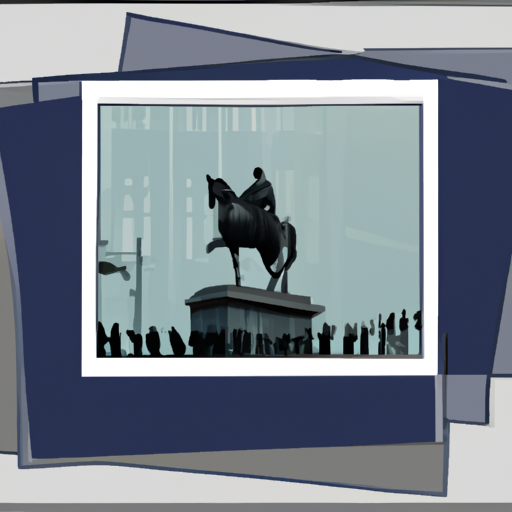History of Victorian Teeth Cleaning: How Did Victorians Keep Their Teeth Clean?
Behold the curious past of Victorian dental care: What manner of methods did they employ to keep those pearly whites sparkling?

The past of dental maintenance in the Victorian period is an intriguing one. In the nineteenth century, dental care was oftentimes a harrowing and hazardous undertaking. Tooth extraction was the most prevalent form of treatment, as few dentists had any understanding of preventive measures. Relief from pain was also restricted, with alcohol and cocaine employed to numb the agony during procedures. Cleaning teeth wasn’t a priority either, as toothbrushes weren’t generally accessible until after World War I. People would instead employ cloths or rags to clean their teeth, while some would even munch on twigs in an attempt to keep their teeth clean. It wasn’t until later in the century that more effective forms of dental care became available, such as fluoride treatments and regular brushing with toothpaste. While Victorian dental care may have been rudimentary compared to today’s standards, it established the framework for contemporary dentistry as we know it nowadays.
.
Introduction

Throughout the Victorian era in England, people experimented with various methods of cleaning their teeth. From animal bristles and feathers to toothpowders concocted from ingredients like charcoal, almonds, cuttlefish bone powder and even pulverized brick, many different techniques were tried. Even sticks or rags were used for this purpose. In 1866, William Addis of Clerkenwald changed all that by inventing the first mass-produced toothbrush with boar bristles and a carved bone handle. This breakthrough revolutionized dental hygiene in Victorian England and set the stage for modern toothbrushes.
– Historical Overview of Victorian Teeth Cleaning Practices
The Victorian era saw a variety of interesting approaches to teeth cleaning. Before the advent of modern toothbrushes and toothpaste, people had to rely on natural remedies, such as twigs, rags and animal bones, to scrape away plaque and food particles from their teeth. Herbal mixtures were also used for freshening breath and reducing bad odors in the mouth.
By mid-19th century, many people began using tooth powders for brushing their teeth. These powders contained abrasive substances such as brick dust or charcoal to help remove plaque and food particles from the surface of the teeth. Some even contained antiseptic ingredients like myrrh or cloves that would help kill bacteria in the mouth.
In 1857, William Addis created the first mass-produced toothbrush with bone handles and boar bristles. This design was improved upon over time with more comfortable handles and softer bristles made from horsehair or nylon added for easier brushing. The late 19th century saw the invention of toothpaste which enabled people to brush their teeth more effectively than ever before.
Though primitive when compared to modern standards, these traditional methods still served an important role in maintaining dental hygiene during this period. By combining these practices with new inventions like toothbrushes and toothpaste, people were able to keep their teeth looking cleaner than ever before!
– Investigating the Rise of Toothbrushes in Victorian England
In 19th century England, toothbrushes were a necessity. Yet their history is shrouded in obscurity. To gain an understanding of the emergence of toothbrushes during this period, historical records can be consulted.
The introduction of toothbrushes to England was credited to William Addis, a Dutchman who drew inspiration from pigs using sticks for cleaning their teeth. He fashioned a brush with bone and wire bristles which he peddled on the streets of London.
As manufacturing processes improved and there was greater demand from consumers, the popularity of toothbrushes increased exponentially. In 1844, H.N. Wadsworth patented an upgraded version featuring a wooden handle and gentler bristles made from animal hair or vegetable fibers – this design established itself as the standard for many years to come.
By mid-century, toothbrush production had been industrialized and mass-produced models became widely available in shops across England. The burgeoning middle class also had more money to spend on such items compared to before, resulting in higher levels of oral hygiene among Victorians and further popularizing the use of toothbrushes.
The advent of toothbrushes in Victorian England was driven by both technological progress and consumer need, making them a vital part of everyday life during that era.
– Exploring the Use of Traditional Home Remedies for Teeth Cleaning in the Victorian Era
Amidst the Victorian Era’s remarkable scientific and medical advances, traditional home remedies were still utilized to treat various ailments. One such remedy involved natural substances for teeth cleaning. This article will take a look back at this practice and how it was used during the Victorian period.
Back then in England, tooth cleaning wasn’t exactly a priority since no brushes or other tools were available to do it properly. People resorted to using their fingers or cloths to try and get rid of food particles from their teeth, but this proved ineffective and often caused further damage due to bacteria build-up.
The Victorians began experimenting with different home remedies for cleaning their teeth, such as rubbing them with lemon juice or vinegar, or ash mixed with water. These methods were thought to be effective at removing plaque and food particles from the teeth, though they also inflicted damage due to their abrasive nature.
Herbs like mint leaves or rosemary were also rubbed on the teeth as a popular remedy during this time period; believed to reduce inflammation and bad breath while providing antiseptic properties that could fight off bacteria in the mouth.
Charcoal powder mixed with water was another experiment tried by Victorians as a tooth cleaner; charcoal powder being an absorbent material that can draw out toxins from the body – which is why it’s still used today in some toothpastes and mouthwashes – seemed reasonable enough for tooth cleaning purposes too.
Finally, salt mixed with water was one of the most popular home remedies during this time period; salt having antiseptic properties that can help kill bacteria in the mouth while also reducing inflammation and pain associated with gum disease or cavities.
All in all, traditional home remedies were widely employed during the Victorian era for teeth cleaning purposes – even if they weren’t nearly as effective as modern dental hygiene practices, they did provide some relief from pain and discomfort associated with poor oral health at that time period.
– Examining the Role of Dentists in Victorian Oral Hygiene Practices
The Victorian era saw a tremendous surge in medical science and technology, with dentistry leading the charge. New tools and techniques were developed to extract teeth, clean and fill cavities, and treat gum disease. Simultaneously, dentists began educating the public on proper brushing and flossing techniques as well as the importance of regular visits for check-ups and cleanings. These measures helped improve oral hygiene standards for all, establishing a legacy that has been carried forward to this day.
– Analyzing the Impact of Industrialization on Victorian Teeth Cleaning Habits
The Victorian era saw a revolution in teeth-cleaning practices, thanks to the industrialization of the time. The mid-1800s saw an increase in production of toothbrushes and toothpaste, making them accessible and affordable for more people. This made it easier for individuals to incorporate these into their daily dental hygiene routines, replacing less effective methods such as cloths or twigs.
At the same time, dentistry was advancing, with dentists recommending brushing twice a day with a soft-bristled brush and using fluoride toothpaste for best results. With brushes and paste now readily available to everyone, it was possible for people to follow this advice more easily than before.
The result was a dramatic improvement in oral health care among all classes of society. Industrialization had opened up opportunities that were previously unavailable or too expensive for many individuals to pursue, offering them better ways to look after their teeth than ever before.
conclusion

A perplexing array of techniques were employed by the Victorians to keep their teeth pristine, from tooth powder and toothpaste to abrasive brushes. Toothbrushes didn’t become commonplace until the late 1800s, yet the Victorians still managed to maintain a surprisingly high level of dental hygiene. This is exemplified by the fact that many Victorians had significantly better dental health than is typical today.
.
Some questions with answers
Q1. How did Victorians clean their teeth?
A1. The Victorians used tooth powder, toothpaste, and a toothbrush to clean their teeth.
Q2. What materials were used to make the toothbrush?
A2. Toothbrushes during the Victorian era were made from animal hair, such as boar bristles or horsehair, attached to a handle made from bone or ivory.
Q3. When did the use of toothpaste become common?
A3. The use of toothpaste became more common in the late 19th century when it was sold in jars and tubes similar to those we use today.
Q4. Did people brush their teeth daily during this period?
A4. Brushing one’s teeth was not as common during this period as it is today; however, some individuals would brush their teeth with the available products once or twice a day.
Q5. What other methods were used for dental hygiene in Victorian times?
A5. Other methods used for dental hygiene in Victorian times included rinsing with salt water, using lemon juice or vinegar mixed with water, and rubbing cloves on the gums and teeth for fresh breath and pain relief.





